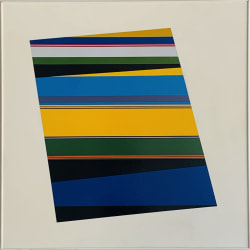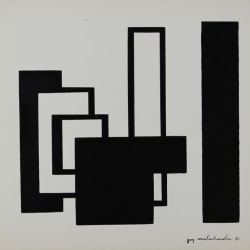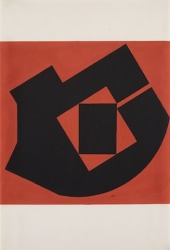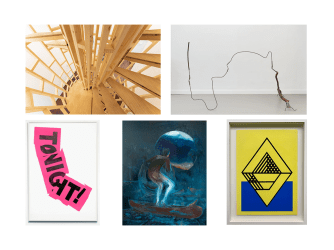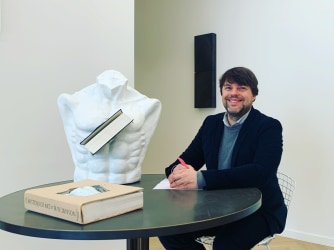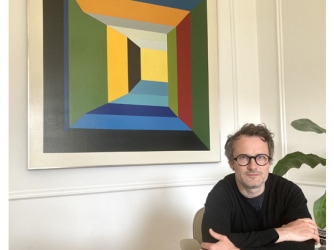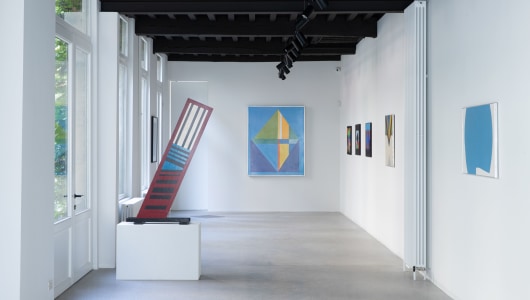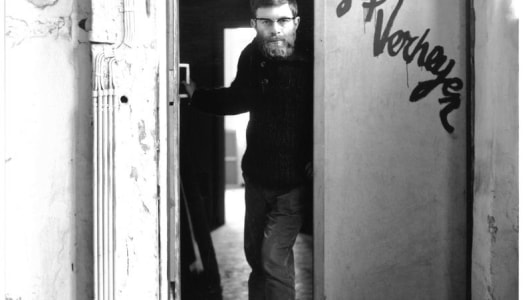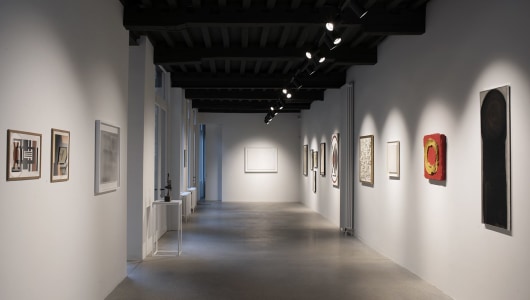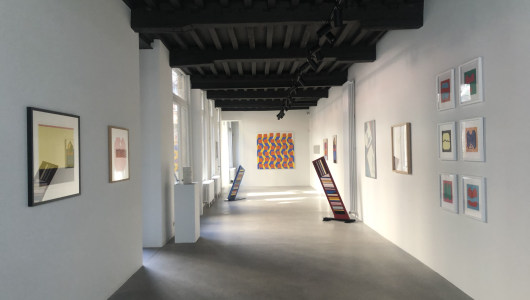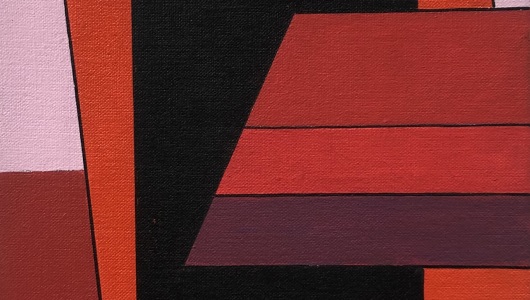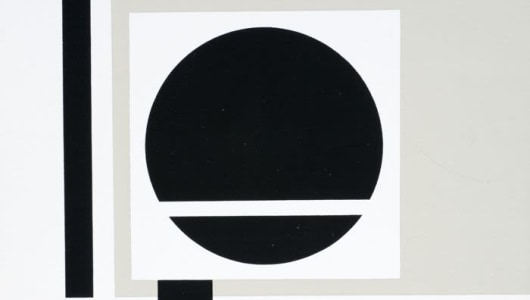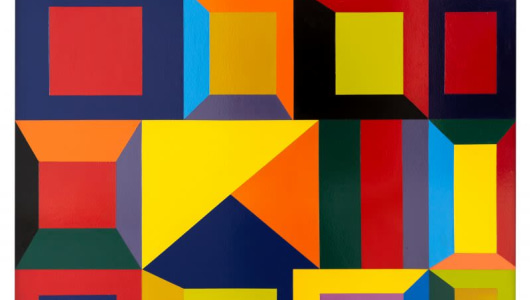Guy Vandenbranden 1926 - 2014
Represented by:
Callewaert Vanlangendonck Gallery
From 1951 onwards, Guy Vandenbranden left figuration behind and started to work in a lyrically abstract way. In 1952, Vandenbranden ended up in the Brussels art scene and became friends with Pol Bury, Jo Delahaut, Kurt Lewy, Jean Rets and Jean Milo. Thanks to these contacts, Guy Vandenbranden joined the artists’ group “Art Abstrait” in 1956. Vandenbranden worked completely in a geometrically abstract fashion from 1954 on and practised this visual language consistently until his death in 2014. Around 1958, Vandenbranden worked in black and white mainly, his artworks almost evolving to monochromy and there was a clear connection with the work of the American Hard Edge of that time. From 1961 onwards, Vandenbranden started working with relief and his first abstract sculptures were created. From 1967 onwards he started to spray cellulose lacquer directly on panels with the aim to create visual illusions (akin to the Op Art).
In 1959, Vandenbranden and Jef Verheyen planned to open an international avant-garde gallery in Antwerp to bring together artists with a like-minded spirit. Piero Manzoni, Jean Tinguely and Lucio Fontana had pledged to work together, but in the end this project jumped and G58 took the role as platform for a new (European) avant-garde at the Hessenhuis in Antwerp. After their project ended, Vandenbranden and Jef Verheyen forged plans with Englebert Van Anderlecht to the establishment of the New Flemish School in 1960. This artists’ group, including Paul Van Hoeydonck, Jan Dries and Vic Gentils, aimed to promote their art internationally with exhibitions in Germany, Switzerland and Italy.
Vandenbranden was part of several art movements: Art Abstrait [Abstract Art] in 1956, Formes [Forms] in 1960 and Art Construit [Constructive Art] in 1960. In 1960 he settled permanently in Antwerp, where he had lifelong artistic friendships with Jef Verheyen, Vic Gentils and Walter Leblanc. He increasingly exhibited abroad (Switzerland, Italy, Germany and The Netherlands), where he befriended artists from the ZERO group, such as Lucio Fontana, François Morellet, Günther Uecker and Yves Klein.
In 1959, Vandenbranden and Jef Verheyen planned to open an international avant-garde gallery in Antwerp to bring together artists with a like-minded spirit. Piero Manzoni, Jean Tinguely and Lucio Fontana had pledged to work together, but in the end this project jumped and G58 took the role as platform for a new (European) avant-garde at the Hessenhuis in Antwerp. After their project ended, Vandenbranden and Jef Verheyen forged plans with Englebert Van Anderlecht to the establishment of the New Flemish School in 1960. This artists’ group, including Paul Van Hoeydonck, Jan Dries and Vic Gentils, aimed to promote their art internationally with exhibitions in Germany, Switzerland and Italy.
Vandenbranden was part of several art movements: Art Abstrait [Abstract Art] in 1956, Formes [Forms] in 1960 and Art Construit [Constructive Art] in 1960. In 1960 he settled permanently in Antwerp, where he had lifelong artistic friendships with Jef Verheyen, Vic Gentils and Walter Leblanc. He increasingly exhibited abroad (Switzerland, Italy, Germany and The Netherlands), where he befriended artists from the ZERO group, such as Lucio Fontana, François Morellet, Günther Uecker and Yves Klein.
Artworks
Articles
Media
Highlights
Recommendations
Collections
Shows
Market position
CV
Articles on Guy Vandenbranden
Shows
Free Magazine Subscription
Articles, interviews, shows & events. Delivered to your mailbox weekly.
